Epic Revival: GM’s 50 Millionth Car Rides Again
Though restorers hold otherwise, immortality lies beyond the reach of ordinary automobiles. Of course, for every hard and fast rule there is an exception. Tip your hat to the recreation/revival/return of the 50-millionth car built by General Motors—this “Golden” 1955 Chevrolet Bel Air sport coupe.
Seventy years ago, GM was the world’s largest industrial enterprise. On November 23, 1954, the city of Flint, Michigan, where GM was founded, closed schools and halted traffic to host a mile-long parade called the Golden CARnival, boasting nine brass bands, 18 floats, and 72 noteworthy GM vehicles. An estimated 200,000 spectators cheered GM’s success and their own good fortune.
- First GM production car—1908 Cadillac
- 1-millionth GM car—1919 Oldsmobile
- 5-millionth GM car—1926 Pontiac
- 10-millionth GM car—1929 Buick
- 25-millionth GM car—1940 Chevrolet
The star of the CARnival was GM’s 50-millionth production car—a gold-painted 1955 Chevy Bel Air two-door hardtop. Barely an hour before the start of the parade, employees at Chevrolet Flint Assembly lowered this car’s body onto a gold-painted chassis while company president Harlow Curtice blessed the marriage. All the interior and exterior trim parts, including front and rear bumpers, were gold-plated!
Turns out that the Golden ’55 was in fact three distinct automobiles. Car number one, assembled a month in advance of the parade, was used in period publicity photos. It also starred at the five Motorama shows GM hosted in 1955 before being sold to some lucky customer.
Thirty-some years ago, that car was tracked down to a North Carolina owner who had no interest in selling, or even talking, about it. Unfortunately, this Bel Air was destroyed in a garage fire in 1996. The owner chopped the burned body into several pieces, scattering them about his property. Last summer, the charred remains, some of which were gold-plated, were purchased by Joe Whitaker of Real Deal Steel (RDS), an enterprise in Sanford, Florida that, last April, began creating the tribute vehicle shown here.
The second Golden ’55 Chevy, also built in October 1954, starred in a GM film entitled Achievement U.S.A. It hasn’t been seen since, and its whereabouts are unknown.
Car three was the ’55 Chevy assembled in November 1954 which rode atop a float in the Golden CARnival parade. Regrettably, this actual 50-millionth car has also been lost to the ages.

Immortality is not beyond the reach of the truly resourceful car enthusiast, however. Proof comes from the RDS enterprise founded in 2011 by Joe Whitaker and Randy Irwin, two of the most dedicated revivalists in collector car history. Over the past decade, they’ve sold hundreds of their products—1955–57 Chevrolets, 1967–69 and 1970–81 Camaros and Firebirds, plus various Chevy IIs and Novas—in the form of brand-new steel bodies to restorers who won’t be stopped in their pursuits.
Rather than starting with a donor Chevy built by GM, the gents at RDS began this project with spanking new electrophoretic-painted steel panels provided by their primary sponsor Golden Star Classic Auto Parts of Lewisville, Texas. Golden Star is the uncontested leader in the manufacture of fresh, top-quality sheetmetal replicating American and VW classics. Headquartered in Texas, they’re backed by a Taiwanese arsenal of CAD/CAM technology, stamping dies, and metal presses. This firm also supplied the new steel frame underlying the Golden 1955 Chevrolet Bel Air.
Paul Hsieh, who founded Golden Star and is now 58 years old, began working in a Taiwanese stamping plant as a young man before immigrating to Georgia where he spent eight years at Goodmark Industries, a leading restoration parts house. He began Golden Star in 2003. He explains how a fresh car body is manufactured from flat sheet steel:
“We start by shipping a complete vehicle to Taiwan. A plaster mold is made for each part before the original donor body is cut apart. A second mold is created after that piece is removed from the donor vehicle. Both plaster castings are digitally scanned and the two images are compared in software. Subtle human interpolations yield one final smooth, symmetrical design.
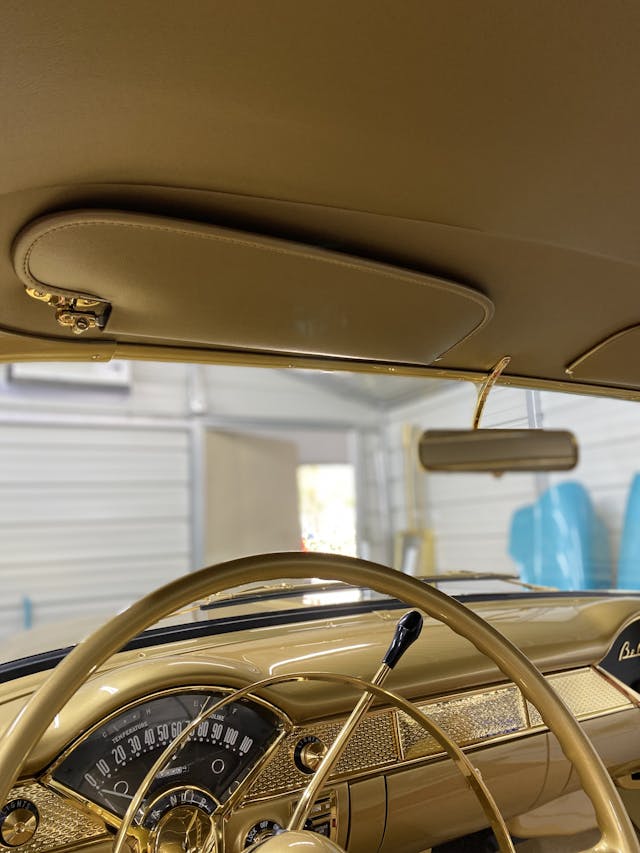
“That scan data is used to create a full-size foam model of each part. Next, we convert the foam model to a sand casting. Molten steel poured into the casting becomes a stamping die after all its surfaces are milled (using scan data) and hand-polished.
“The typical die set consisting of a male component, a female piece, and a top hat to hold the steel sheet in place for forming weighs 7000 to 8000 pounds. To achieve the desired final shape, multiple press strokes are required. The typical fender takes three to four hits requiring nine to 12 separate dies. Some of our larger presses are two to three stories tall. Excess metal is trimmed after stamping by means of a laser [that is] guided by the digital data file.
“Stretching a flat sheet into a curved, final car panel increases both strength and rigidity. Before we commence volume production, we ship prototype parts to end users to confirm perfect fits. If necessary, die adjustments are made to achieve perfection before we begin manufacturing parts for sale.
“We also supply restorers with steel frames, chrome-plated bumpers, complete glass kits, fuel tanks, door handles and latches, and heater boxes.’
Given this painstaking process and the effort required to assemble panels into a complete body, it’s easy to see how RDS charges $21,150 for a 1955 Chevy body shell fitted with doors, decklid, and dash.
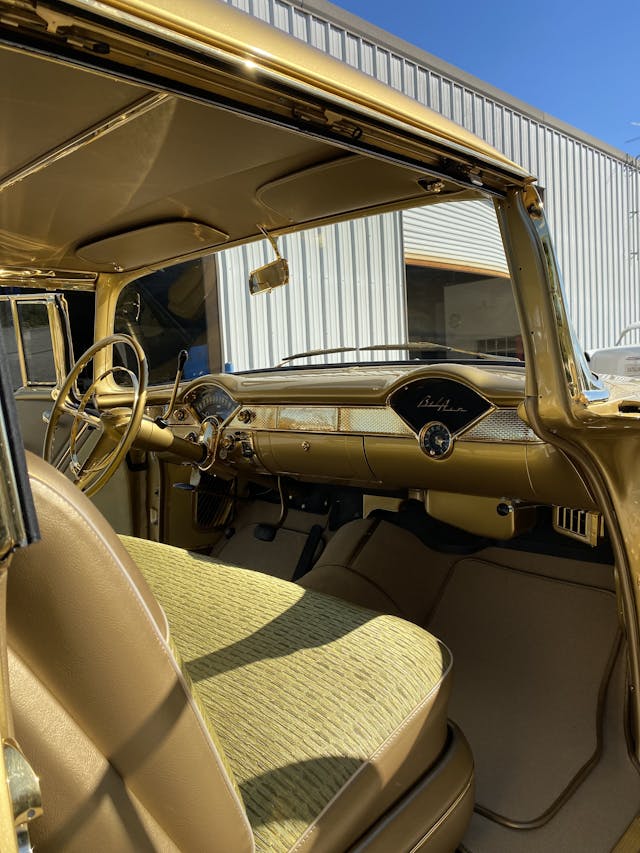
The cadre of other contributors to the cause of the Golden ’55 Chevy include Shafer’s Classic Reproductions, American Autowire, Gene Smith Parts, Auto City Classic, and Ciadella Interiors.
All told, more than 4000 hours of effort and several hundred thousand dollars were invested into the project.
Snodgrass Chevy Restorations of Melbourne, Florida, handled assembly, fitting, and painting of the new body. Steve Blades of Falmouth, Kentucky, served as the project’s historian and researcher, gathering 300 period photos from GM’s Heritage Center, the Sloan Museum of Discovery in Flint, Michigan, and several private sources. He plans on documenting this 10-month restopalooza in a coffee table book.
Snodgrass personnel constructed a new chassis carrying a 265-cubic-inch (4.3 liter) V-8 engine rated at 162 (gross) horsepower, a two-speed Powerglide automatic transmission, and a 3.55:1 rear axle. Tires are 6.70×15 US Royal bias plies from Coker Tire. Instrument panel, steering column, and steering wheel parts are original GM. Interior trim is new old stock (NOS). Nearly a thousand enthusiasts followed the recreation project on Facebook.

The paint used here is a custom Axalta mix logically dubbed Tribute Gold. The finish consumed 5.5 gallons of paint costing $1200 per gallon. The list of 24-karat gold-plated parts includes interior and exterior trim, ID badges, both bumpers, the grille, wheel covers, and over 100 nuts, bolts, and screws. The plating tab alone topped $100,000!
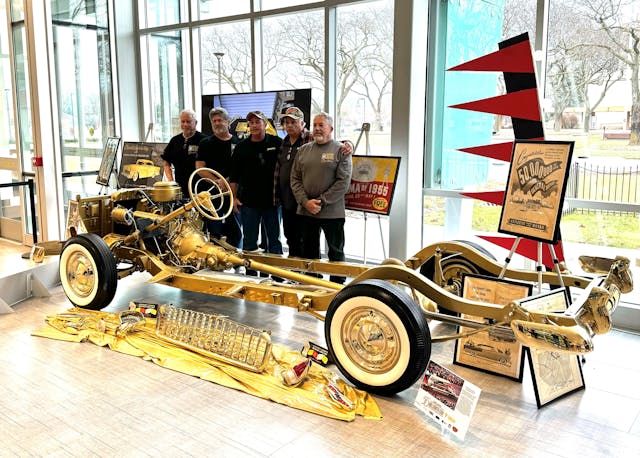
Last December, a few weeks before the Golden body was finished, its chassis was unveiled at the Sloan Museum along with notable memorabilia and salvaged debris from the original Motorama ’55 Chevy. A grander reveal will occur at the 71st Detroit Autorama scheduled for March 1–3 this year at the Motor City’s Huntington Place convention center.
Steve Blades notes, “We believe that our Golden ’55 Chevy Bel Air Sport Coupe needs to be seen and enjoyed by the public at large on a daily basis. The ultimate goal is for it to be housed at either the GM Heritage Center in Grand Blanc, the Henry Ford Museum in Dearborn, or the Sloan Museum of Discovery in Flint.”
Yes, indeed: Homing in on this immortal ’55 Chevy would be well worth your time.
***
Check out the Hagerty Media homepage so you don’t miss a single story, or better yet, bookmark it. To get our best stories delivered right to your inbox, subscribe to our newsletters.
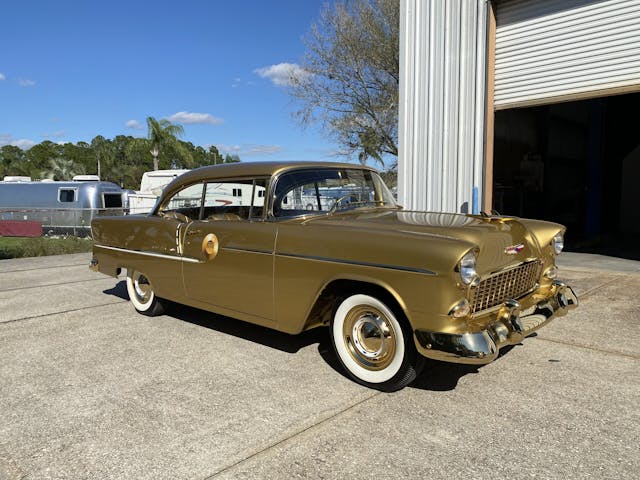

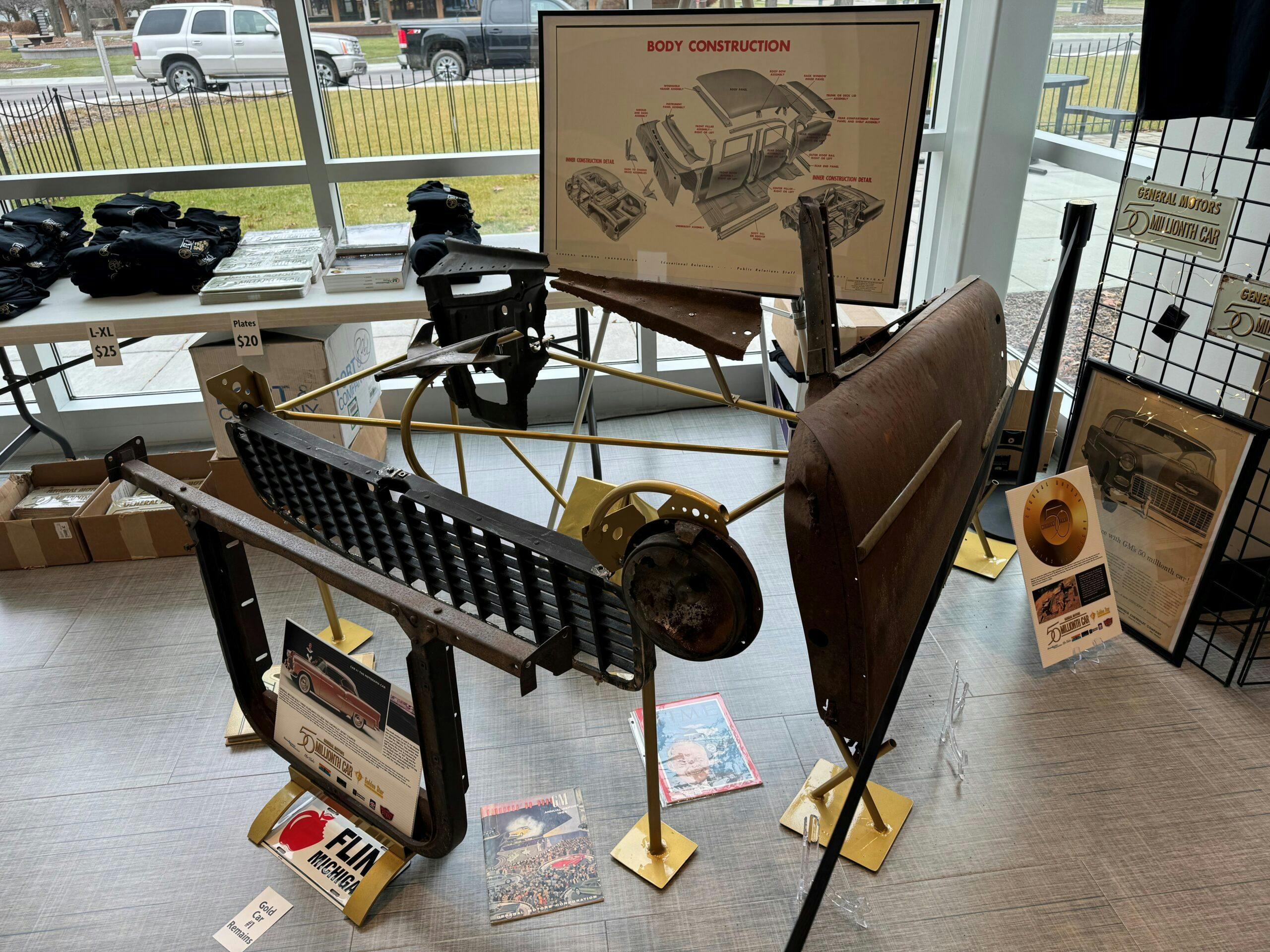
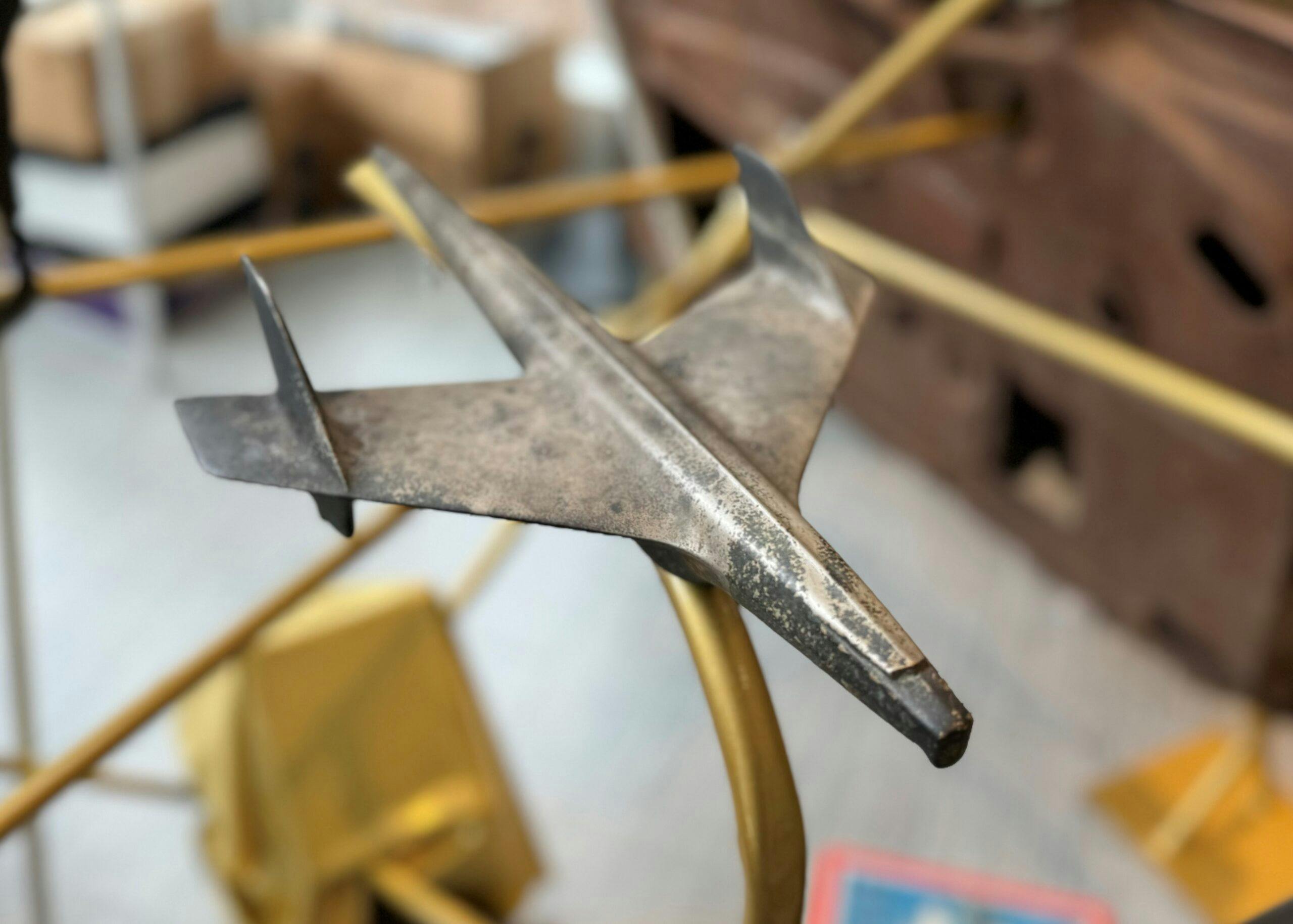
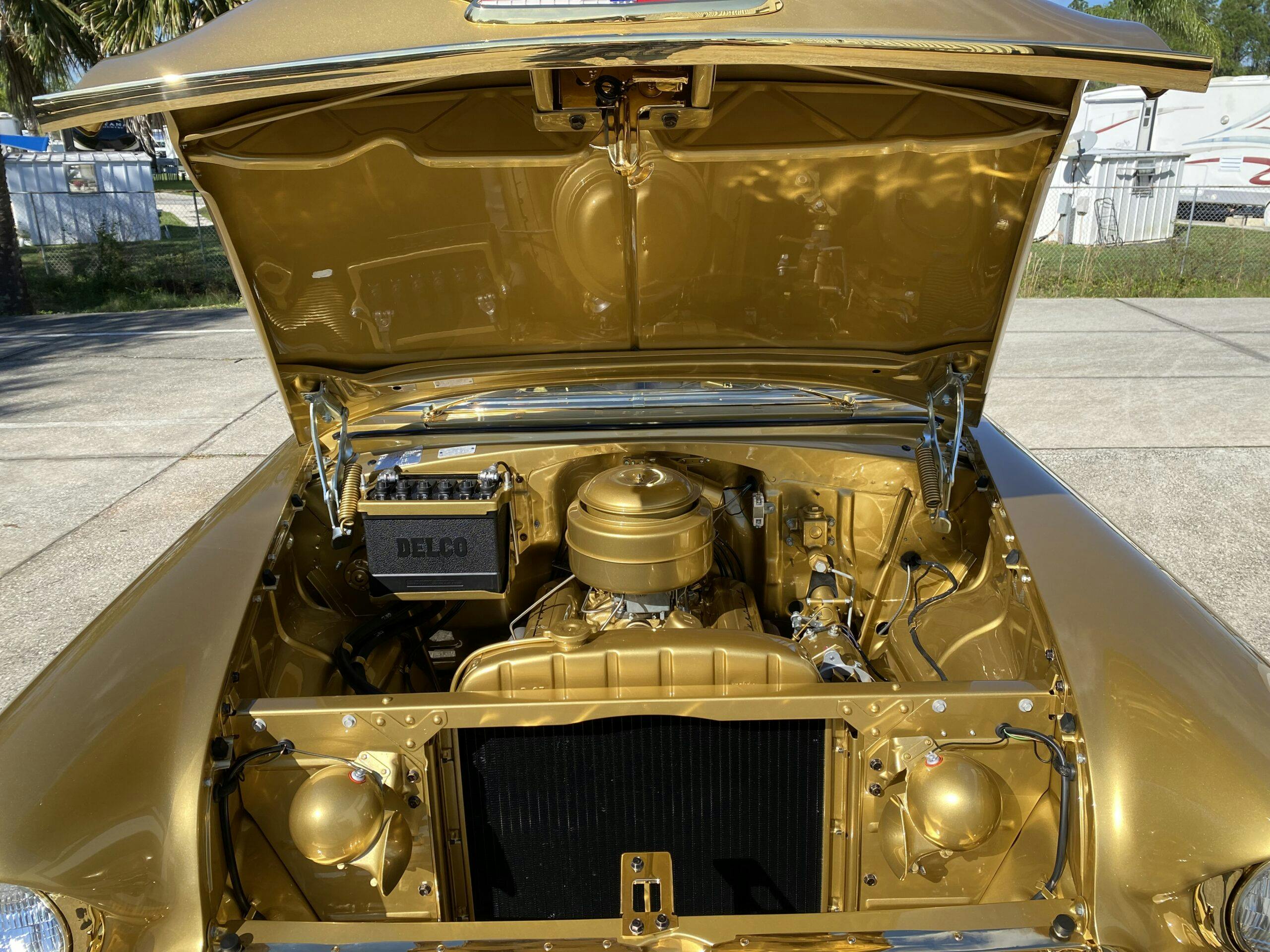
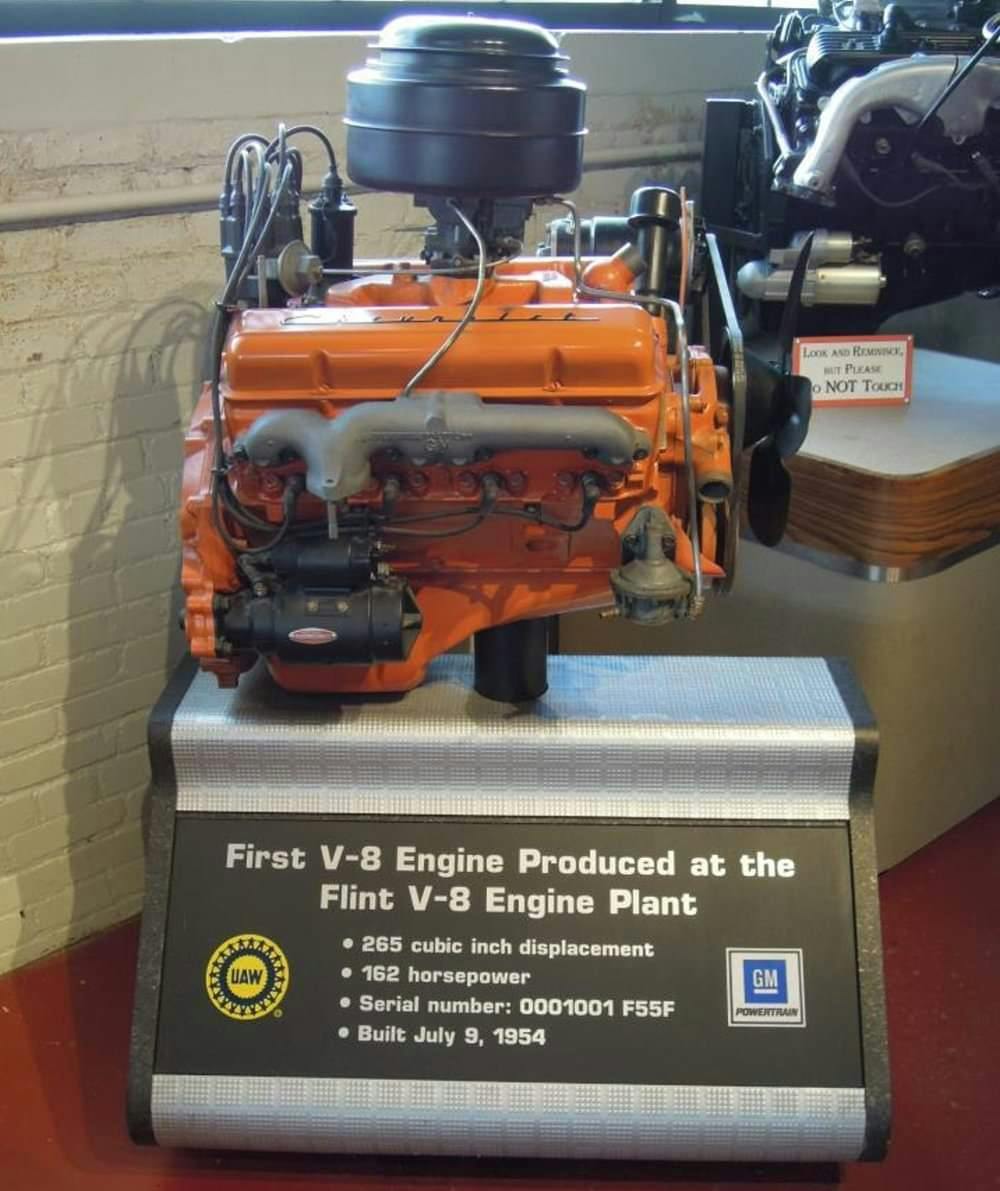


My guess is the was built to celebrate what many perceive as the American dream and success. GM used it as a trophy and I think RDS is too.
Business is successful for them and this is one way of showing something to the public that they can see, hopefully appreciate and enjoy. I’m glad they want to display the car, it’s better than building the car and storing it for another 50 years in a collection no one will see. I would say well done !
Some people say because you can doesn’t mean you should. On this one I disagree with some of the comments, it is a great tribute to the Tri Fives and a great milestone for General Motors.
The parade in the video documents a great time in American automobile production. The auto industry’s great success was a symbol of what America could do and what it could provide for its people after World War Two. Flint and Saginaw are what was left behind when auto production took a wrong turn. All Flint is known for today is bad water. Sad.
I love a tri five. This was a waste of time, energy and resources. This talent and money could have been used for some usable cars, that could have made quality memories. Oh well.
I THOUGHT AXE (AX) WAS SPELLED WITH AN “E”. MAYBE IN OTHER PARTS OF OUR GRATE COUNTRY. TOOO
MUCH GOLD FOR ME, THEY SHOULD HAVE PUT GOLD LINE TIRES ON IT, LIKE THEY HAVE ON CORVETTES. I DON’T COMPLAIN ABOUT CHEVIES BUT…….
I had to read the entire article to find out what became of the few remaining original parts. This would only have been a fitting tribute if the original had been built in Taiwan.
I was intrigued to read that GM’s 5-millionth car was a 1926 Pontiac – the first year for that marque. I saw the first Pontiac at Hershey many years ago.
Yes Ford did get fed up losing to Chevrolet for so many years… they dumped over 100k cars on Hertz for rentals since they owned a portion of it. Then came 1958 and the IMPALA … game over again for Ford.
If it’s mostly repro, what does the VIN plate say? Is it street leagal?
It is a reproduction. The original one belonged to my dad who passed away in 2011.
Really enjoyed the parade film. I was a 16 yr old kid, & part of that crowd watching the parade winding down Saginaw St. that chilly Nov day. As part of that big 50th celebration, all the GM factories in Flint had “open house” for the week preceeding the parade. My buddy & I spent most of one afternoon at the Chevy assembly on VanSlyke Rd. watching 55’s come down the line. For a “car nut”, like most of us were, it was fun times growing up in Flint in the 40’s & 50’s. I’m still a “car nut” at age 86. We have a 36 Buick & a 70 Buick Slykark, which have owned for 50 years.
None of the 50 Millionth Gold Parts were cut up or discarded. My dad owned this car #1 and car #3 the #1 body was destroyed in a fire in the late 90’s the frame is still around as well as sports coupe body #3. So Joe Whitaker has no parts burnt from the original car.
To bad I know personally all about the original car and owner and know the location of the original one
You need to get the facts of the story correct before speculating. The car’s body was burnt but NOTHING WAS CUT UP OR BURIED EVERYTHING FROM THAT CAR IS STILL IN THE FAMILY AND WILL ALWAYS BE
Joe Whitaker is a real jerk and a snake